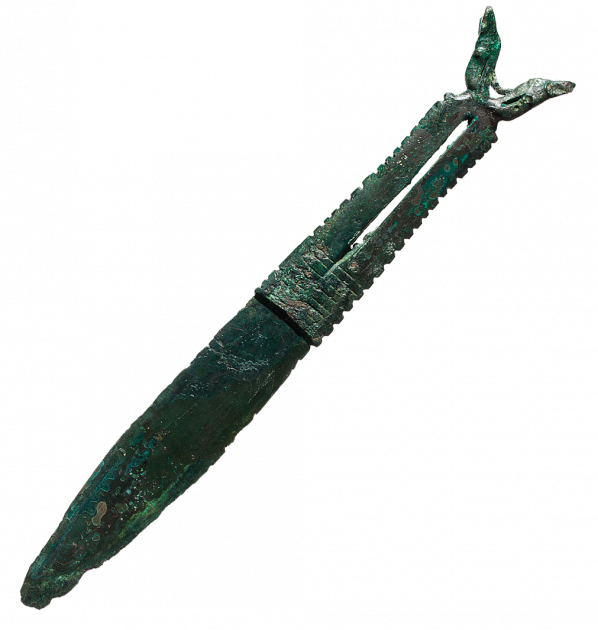Dagger with a pommel in the form of two elk heads

The flat double-edged blade of the dagger is cast from tin-arsenic bronze (a copper-tin alloy with arsenic added), while the handle uses an alloy without arsenic. The lower part of the handle is decorated with parallel notches emulating winding with a leather band or rope. Above the threads, in the middle of the handle, is a longitudinal slot where one can see traces of the casting seam. The sides of the handle are decorated with deep notches. On one side of the dagger, on the sides of the slot, are carved zigzag lines: an ancient symbol imitating creeping snake. The pommel of the dagger is made in the form of two realistically sculptured elk heads, facing towards the handle.
More information...On both heads are clearly marked characteristic hanging upper lip, eyes in the form of little bumps, a deep slit of the mouth and long, drawn back ears of the animals. The dagger is dated back to the edge of the III and II Millennia BC.
Functional purpose: in addition to utilitarian purpose, the dagger may have had a ritual function. Images of the snake and the elk were extremely widespread in religious and mythological consciousness of ancient man. They symbolized the Upper and the Lower worlds. Besides this extraordinary dagger was undoubtedly an attribute of power.
Notice of uniqueness: this unique item is distinguished by high artistic craftsmanship and very rich semantic load of the ornament. The ornament suggests certain vision of spiritual life of the population of the Forest and Forest-Steppe zones of Northern Eurasia at the turn of the III-II Millennia BC.
